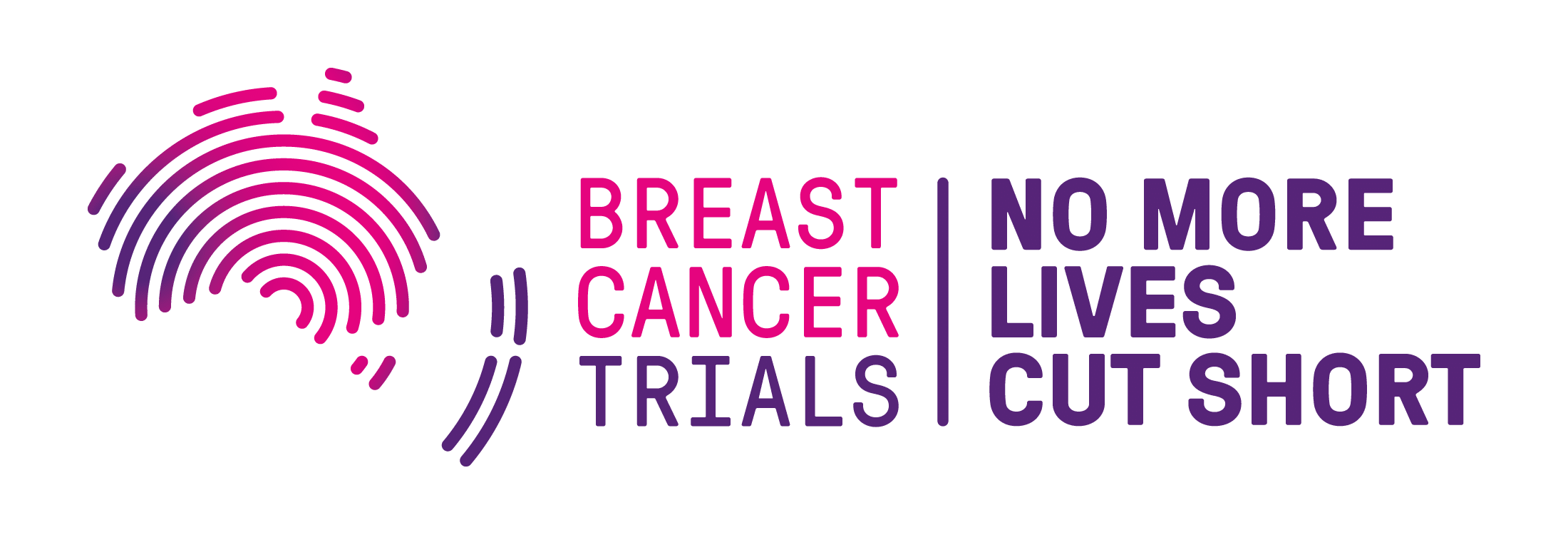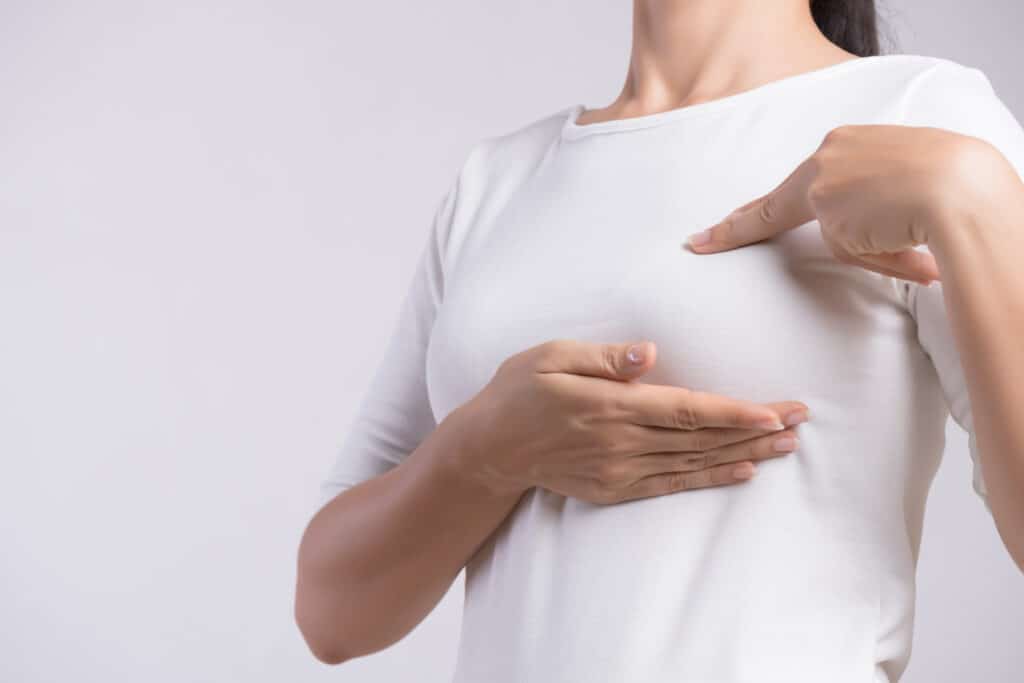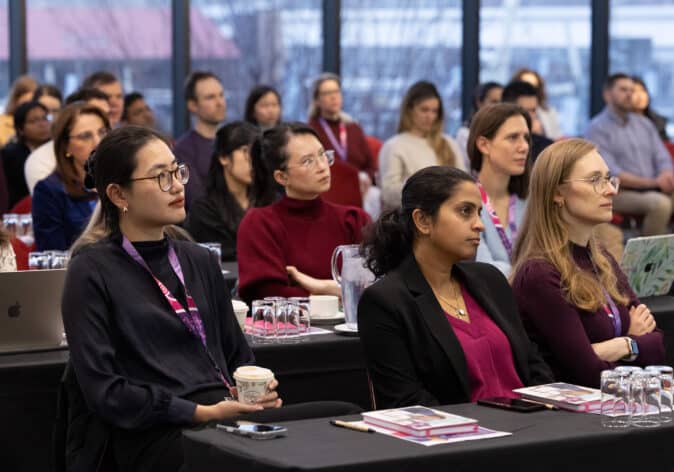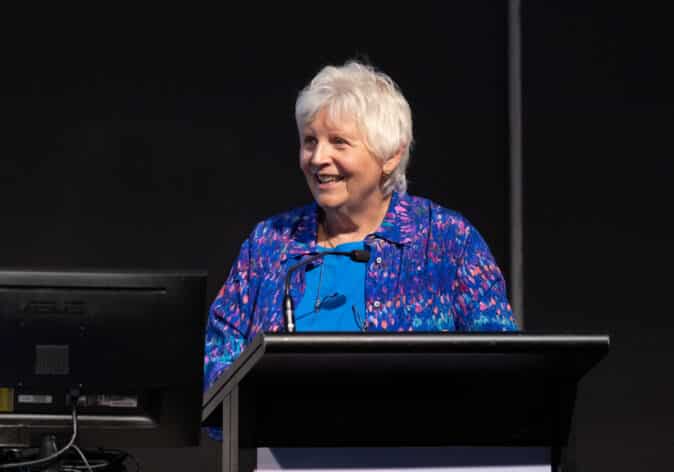Breast cancer can be an overwhelming diagnosis; however, early detection plays a crucial role in improving outcomes and treatment success.
A question that is often asked, is Understanding what a cancer lump feels like can help in the early recognition of breast cancer. By becoming familiar with the typical characteristics of a breast cancer lump, you may be able to detect it earlier, which can lead to quicker diagnosis and more effective treatment options.
While not every lump in the breast is cancerous, knowing what to look for can help guide your next steps. If you discover a lump or any new unusual changes, it’s important to follow Cancer Australia’s guidelines and seek professional medical advice.
What is a breast lump?
A breast cancer lump typically presents with certain characteristics that may help differentiate it from other types of lumps. Understanding what a breast cancer lump feels like to touch is the first step in recognising potential issues. Common traits of a breast cancer lump include:
- Hard or firm texture: A cancerous lump is often firm or hard to the touch.
- Irregular shape: It may not be round or smooth; instead, it could feel uneven or jagged. It’s important to know your ‘normal’ shape to help monitor irregular changes.
- Fixed (not easily movable): Cancerous lumps are usually fixed in place and don’t move under the skin when touched.
- Painless in most cases: Most breast cancer lumps are painless, though some people may experience mild discomfort.
- Located in various areas: The lump may be in the breast or even in the underarm region.
Beyond the lump itself, there are several other signs and symptoms of breast cancer to be aware of:
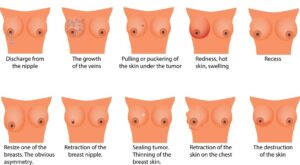
For examples of skin texture changes and additional symptoms, view our article on breast cancer skin changes here.
It’s also important to consider other symptoms that may suggest breast cancer. Its common (and normal) for one breast to be slightly bigger than another. However, if you notice unevenness, a new skin rash or raised plaques on the breast, or a nipple that used to point out is now pulling in or retracting, it is recommended to seek professional medical advice. For more details on non-lump symptoms, you can refer to our breast cancer symptoms article.
Tamara’s Diagnosis and The Importance of Clinical Trials
Tamara Dawes was a participant in a clinical trial conducted by Breast Cancer Trials. Tamara discovered a lump due to her proactive approach to health checks and seeking medical advice when she noticed an unusual lump in her breast. Her decision to participate in a clinical trial was motivated by the opportunity to contribute to research and strengthen the data supporting future treatments. Tamara’s involvement was influenced by her desire to support the advancement of breast cancer treatments and help improve the side effects associated with treatments.
What to do if you find a lump in your breast?
If you discover a lump in your breast, it’s normal to feel concerned. However, it’s important not to panic. Here are the key steps you should follow:
- Monitor: Monitor the lump you have found 3-4 weeks to see whether it changes.
- Consult a doctor: Book a consult with your doctor and they will assess the lump to determine the next steps.
- Imaging: Your doctor may recommend imaging tests, such as a mammogram or ultrasound, to get a clearer picture of the lump.
- Biopsy: In some cases, a biopsy may be needed to confirm whether the lump is cancerous.
It’s important to remember that not all lumps are cancerous. In fact, many lumps are benign. However, it’s always best to seek a medical opinion when you notice unusual changes.
Breast cancer treatment and support
If diagnosed with breast cancer, there are several treatment options available, depending on the stage and type of cancer. These may include:
- Surgery: Often, surgery is required to remove the tumour or even the entire breast in more advanced cases.
- Radiation: This treatment uses x-rays to target and destroy cancer cells.
- Chemotherapy: Chemotherapy involves using medications to kill cancer cells or stop their growth.
- Targeted therapy: This treatment targets specific molecules involved in cancer cell growth, offering a more tailored approach to treatment.
- Clinical trials: If eligible, your doctor may recommend participation in a clinical trial. Clinical trials are vital for advancing medical knowledge and discovering new treatments. Learn more about our open trials.
There are also numerous support resources available for those affected by breast cancer. From counselling services to support groups, there are ways to help manage the emotional and physical challenges that come with a diagnosis.
For more information on available resources, visit our resources for patients and families page.
Understanding what a breast cancer lump feels like can save lives
Recognising what a breast cancer lump feels like and noticing unusual changes in your breasts are important steps in improving the chances of early detection and successful treatment if breast cancer is diagnosed.
Cancer Australia recommends women of all ages to be aware of how their breasts look and feel, and to seek professional medical advice if anything unusual appears. Women aged 50-74 are invited to screen every two years and women over the age of 40 and 75 are welcome to screen, however a consult with a medical professional is advised.
You can help fund critical breast cancer research by donating to support continued advancements in early detection and treatments. Every contribution helps us ensure that no more lives are cut short by breast cancer.
Participation in our open clinical trials is critical for advancing medical knowledge and improving treatment options. Learn more about our current clinical trials programs.
FAQs
What is the most appropriate method for early detection?
The most appropriate methods for early detection of breast cancer include:
- Breast awareness: This involves being familiar with the normal look and feel of your breasts so that you can notice any abnormal changes.
- Clinical breast examination: A physical examination of the breasts by a healthcare professional to check for abnormalities.
- Screening mammography: Regular mammograms for women aged 50-74 through BreastScreen Australia, the national screening program.
For more on these methods, check out Cancer Australia’s early detection resources.
What are the key warning signs of breast cancer?
Key warning signs of breast cancer include:
- A lump in the breast
- Nipple discharge
- Skin dimpling
- Changes in breast size or shape
For more details, visit our symptoms page.
What does stage 1 breast cancer feel like?
Stage 1 breast cancer is often characterised by a small, firm, and painless lump in the breast. It may not cause noticeable symptoms but can be detected by medical screening. For more information on the stages of breast cancer, visit our breast cancer stages page.
Can men have breast lumps?
Yes, men can develop breast cancer, although it is rare compared to women. Breast cancer in men accounts for less than 1% of all breast cancers. Men may experience similar symptoms to women, such as a lump in breast or changes in the skin. For more information on male breast cancer, including statistics and symptoms, visit our male breast cancer page.
